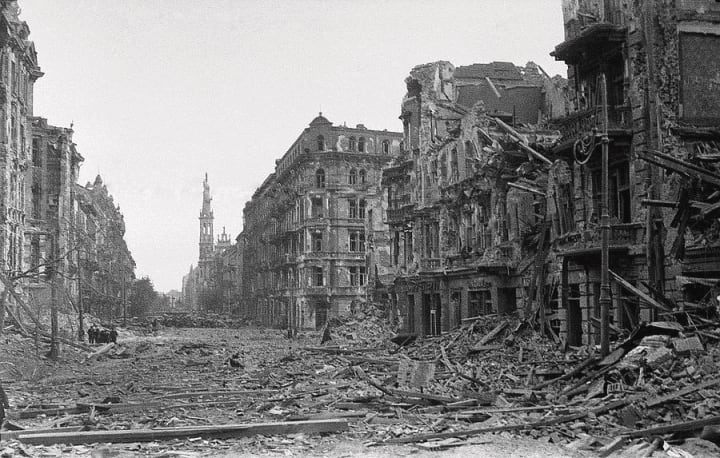
WHO:
Zdzisław Czermański
(I can't even begin to pronounce his name, so I will just refer to him as Mr. Z Cz.)
Born in Poland in 1900. Died in New York in 1970.
Has been depicted as: "graphic artist, caricaturist, painter, author of memoirs, legionnaire and officer of the Polish Army." *
WHAT:
"Czermanski’s is a subtle satire, the more effective because it relies so little on Distortion. He has a passion for detail. Drawing in a mixture of pencil, pastel and oil paint he builds an effective, hilarious whole by concentrating on a few minutiae..." **
Satire, according to Oxford Languages Dictionary, is "the use of humor, irony, exaggeration, or ridicule to expose and criticize people's stupidity or vices, particularly in the context of contemporary politics and other topical issues."
"A caricature is a rendered image showing the features of its subject in a simplified or exaggerated way through sketching, pencil strokes, or other artistic drawings (compare to: cartoon). Caricatures can be either insulting or complimentary, and can serve a political purpose, be drawn solely for entertainment, or for a combination of both. Caricatures of politicians are commonly used in newspapers and news magazines as political cartoons, while caricatures of movie stars are often found in entertainment magazines."***
WHEN:
The drawing, "Liberation!" was done in 1945.
"Around 6 million Polish citizens – nearly 21.4% of the pre-war population of the Second Polish Republic — died between 1939 and 1945.
Over 90% of the death toll involved non-military losses, as most civilians were targets of various deliberate actions by the Germans and Soviets.
Both occupiers wanted not only to gain Polish territory, but also to destroy Polish culture and the Polish nation as a whole."****
WHERE:
Mr. Z Cz's artistic reputation was formed in Europe in the 1930's. And in 1931, he also became well-known in America, particularly in New York, drawing for American magazines.
"Back in Poland at the outbreak of World War II, he fled the German occupation, first to France, later to Brazil and, in 1942, to New York, where he lived until his death.
His satirical portraits of American and world personalities were published at various times by Life, Look, Collier and The Saturday Evening Post."*****
WHY:
April 15th - World Art Day - choose a piece of art that inspires you to write about (submit into Art community)
This was prompted by: Oneg In The Arctic's:
BUT WHY THIS PAINTING?
At face value, I was drawn to the representation of, Liberation! because I saw a woman with three children: one son and two daughters. The father is missing. This was my family growing up.
The mother only, is adorned in color, drawing attention to her like in the movie, Schindler's List (one of the greatest movies ever made):
And once the mother got my attention, I saw a tired, but reluctantly hopeful face...one grateful for a new beginning, but not yet trusting in it. This also reminded me of my mother. In an old letter I recently found, she writes to her sister, "I don't feel like I belong anywhere. I'm just looking for a place to call my home."
*
On the mother's head is a scarf. This is of much importance not only to Slavic women, but also to the core telling of this drawing. The scarf in this picture has no color.
When considering the meaning of why the artist has left it plain and why, we need to look at the politics of that day. The Germans and the Soviets were trying to dissolve, diminish, and destroy the Polish culture.
"For Slavic women, the scarf had been generationally significant to them for various reasons, practical but religious and symbolic to their values and identities." *(1-5)
So, the mother's identity (and hope) has been greatly diminished. But she still dons the scarf!
*
The feet of the mother and her daughters have no shoes. But the son, shirtless and bronzed from the sun and hard work, treads ahead, leading them all, carrying a shovel. He is both a child and a man simultaneously. His father is gone (probably due to the war/politics) and the responsibilities of providing for the family have been left to him. And his face shows the wear, reflecting the image of Warsaw in the picture below.
The bare feet of the females show they are vulnerable. The females, represent the culture of Poland and her vulnerability rather than the gender roles.
*
The young girls appear to be sheltered from the apparent uncertainties and harshness of the political environment. One daughter looks for engagement and approval from the elder sister. The elder one, well kept in appearance, is completely engrossed in fantasy and dreams, oblivious to the younger one's needs. Maybe fantasy has saved her. Maybe dreams will save Poland.
*
They celebrate a newfound liberation from the occupation of the Germans in World War II...but will they be truly free?
"In particular, the Soviet and Polish communist authorities expelled between 1944 and 1947 nearly 700,000 Ukrainians and Lemkos, transferring most of them into Soviet Ukraine, and then spreading the remaining groups in the Polish Recovered Territories during the Operation Vistula, thus ensuring that postwar Poland would not have significant minorities or any minority concentrations to contend with. Thousands were killed in the attendant strife and violence.
After the war, many displaced Poles and some of those living in Kresy, now in the Soviet Union, did not end up in Poland as reestablished in 1945.
The population within the respective official Polish borders decreased from 35.1 million in 1939 to 23.7 million in 1946.
Poland's western borders were soon questioned by the Germans and many in the West, while the planned peace conference had not materialized because the Cold War replaced the wartime cooperation.
The borders, essential to Poland's existence, were in practice guaranteed by the Soviet Union, which only increased the dependence of Polish government leaders on their Soviet counterparts."******

They would need those shovels!!!

References:
*https://pl.wikipedia.org/wiki/Zdzis%C5%82aw_Czerma%C5%84ski#%C5%BByciorys
**https://time.com/archive/6767054/art-caricaturist/
***https://en.wikipedia.org/wiki/Caricature#See_also
****https://en.wikipedia.org/wiki/Occupation_of_Poland_(1939%E2%80%931945)
*****https://www.nytimes.com/1970/01/30/archives/czermanski-artist-who-escaped-nazis.html
******https://en.wikipedia.org/wiki/History_of_Poland_(1939%E2%80%931945)
*(1-5) Slavic women have a rich tradition of wearing head scarves, and these garments served various purposes throughout history. Let's delve into the reasons behind this practice:
1. Practical Protection: Historically, Slavic women covered their heads to shield themselves from the harsh elements. Whether it was the biting cold of winter or the scorching sun, headscarves provided practical protection against weather extremes.
2. Cultural Identity: Headscarves also functioned as symbols of cultural identity. Anchored around their heads and necks, these scarves represented age-old wisdom passed down through generations. They were tangible embodiments of tradition and cultural heritage.
3. Modesty and Tradition: In many parts of Europe, including Slavic regions, headscarves were commonly worn by women. They signified modesty, adherence to social conventions, and respect for tradition. The term "babushka," an East Slavic word meaning "grandmother," emerged due to the association of elderly women with headscarves.
4. Religious Significance: For some Slavic women, headscarves held religious significance. In Eastern Orthodox Christianity, women traditionally wore headscarves while attending church. Similarly, Jewish Orthodox women often covered their hair with scarves or other head coverings.
5. Fashion and Style: Beyond practicality and tradition, headscarves were also used for fashion and ceremonial purposes.
In summary, Slavic women wore head scarves for a blend of practical, cultural, religious, and stylistic reasons. These scarves not only protected them from the elements but also carried deep cultural significance and reflected their identity and values.
Source: Conversation with Bing, 4/4/2024
(1) Babushka trend | History and origin of fashion phenomenon | Medium. https://bing.com/search?q=why+did+Slavic+women+wear+head+scarves%3f.
(2) The Enigmatic Elegance: Unraveling the Mystery Behind Babushkas’ Scarves. https://www.beckleyboutique.com/the-enigmatic-elegance-unraveling-the-mystery-behind-babushkas-scarves/.
(3) Headscarf - Wikipedia. https://en.wikipedia.org/wiki/Headscarf.
(4) The Batik: Between Tradition And Feminism. https://www.thegazelle.org/issue/116/the-batik-between-tradition-and-feminism.
(5) How wearing a kokum scarf is supporting Ukraine | CBC News. https://www.cbc.ca/news/canada/sudbury/kokum-scarf-ukraine-support-1.6367409.
About the Creator
Shirley Belk
Mother, Nana, Sister, Cousin, & Aunt who recently retired. RN (Nursing Instructor) who loves to write stories to heal herself and reflect on all the silver linings she has been blessed with






Comments (10)
Fantastic art and history lesson!!! Loved this!!!💕❤️❤️
Dear Shirley ~ Too many trying to erase 'History' of late ~ I fear it may be repeating itself. Thank you for encouraging me; aka 'Noodging' me to "Liberate" myself in sketching my own lead-ins: IOU-1 j.in.the {hard to recognize} l.a.
Well done! I'm Polish-American and the history resonated with me. Thank you for sharing your skill at interpreting art! Reading your description of how artist used color etc was eye-opening. I appreciate art, but often have no idea why I like one piece of art more than another. You've given me food for thought! Time to make some pierogi!
The story is so heartbreaking. I never knew the story behind this painting. I agree wartime leaves unhealing scars especially on a mind of a young child. Your post is thought-provoking for the reader.
This was so heartbreaking. No child should have to go through that. I'm so sorry that you and your siblings had a similar childhood to that. Sending you lots of love and hugs ❤️
I have never seen this artwork before. Thank you for your critique. This is a wonderful, and educational article.
This is a wonderful essay, Shirley. I love how sensitive and evocative your analysis is of the artwork and how well you blend it with the postwar history of Poland. Very, well done!
Thank you for this. I knew very little about this work and the history behind it.
Thank you! I love history and unfortunately, Poland (Ukraine, too) and Russia are still in the thick of it, it's also the background for current events. I appreciate you reading.
Wow! Definitely learned a lot here. But I loved WHY you chose this piece and what it represented for you.